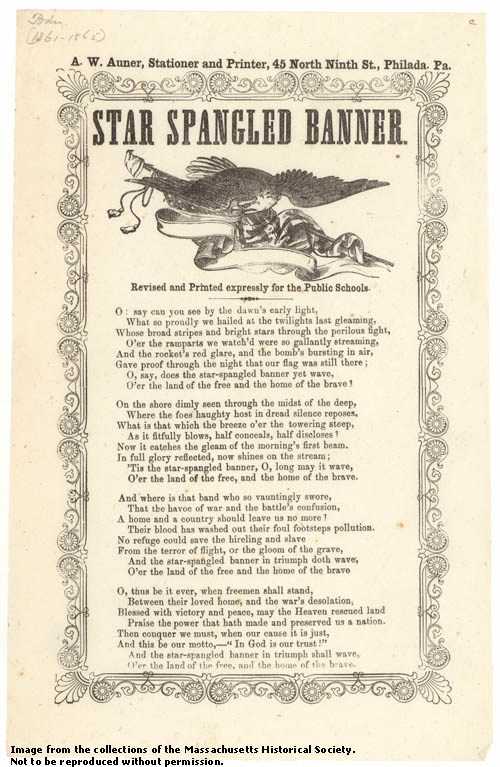Celebrating the Star-Spangled Banner
 On 14 September 1814, Francis Scott Key penned the first lines of the poem that would become the American national anthem. "The Defence of Fort McHenry" was written and popularized in the days immediately following the American's success in fending off an attack by the British on the city of Baltimore during the War of 1812.
On 14 September 1814, Francis Scott Key penned the first lines of the poem that would become the American national anthem. "The Defence of Fort McHenry" was written and popularized in the days immediately following the American's success in fending off an attack by the British on the city of Baltimore during the War of 1812.
Key, a lawyer from Georgetown, and John S. Skinner, a government agent, had been sent by the federal government to arrange the release of Dr. William Beanes. Beanes had been arrested by the British and was being held prisoner aboard a British ship. After securing Dr. Beanes release, Key and Skinner were informed that they would not be allowed to leave the fleet until after the British launched their attack on Baltimore. Perhaps it was feared that Key and Skinner knew too much about the size and force of the fleet and the British attack. After spending several days aboard the HMS Surprise, on 13 September Key and company returned to their own vessel but were required to remain at anchor until after the attack. From the deck of this vessel on the Patapsco River, Key had a clear view of the flag atop Fort McHenry. The battle lasted well into the night,. When the bombardment ended shortly before the break of day on 14 September, Key and Skinner were not certain if the British had taken the fort or if the Americans had repulsed the attack. As daylight broke, the anxious men looked to the fort and saw that "the flag was still there" and the fort was still in American hands. Shortly after the group was allowed to lift anchor and head back to their homes.
The Star-Spangled Banner was written as a multi-stanza poem, illustrated in the broadside (published in the 1860s) shown above, to be sung to the tune of "The Anacreontic Song". Key claimed to have begun writing the poem in the dark hours aboard ship before he knew the outcome of the battle. He completed writing as he sailed back to Baltimore. The finished version was penned in a Baltimore hotel room and was almost immediately distributed as a hand-bill and published in Baltimore area news papers.
Hive Home
Recent Posts
- This Week @MHS
- Founder to Founder
- "Great sights upon the water...": unexplained phenomena in early Boston
- This Week @MHS
- Images of the 1925 bombing of Damascus
- “Light, airy, and genteel”: Abigail Adams on French Women
- This Week @MHS
- George Hyland’s Diary, January 1919
- New and Improved: The Tufts Family Logbooks
- This Week @MHS
- Upcoming Education Events
- The First Publication of Phillis Wheatley
- Christmas 1918
- A lovely day for a cup of Tea!
- This Week @MHS
Beehive Series
- Around MHS
- Around the Neighborhood
- Blog Info
- Civil War
- Collection Profiles
- Collections News
- Education Programs
- Exhibitions News
- From Our Collections
- From the Reading Room
- From the Reference Librarian
- MHS in the News
- On Loan
- Readers Relate
- Reading the Proceedings
- Recent Events
- Research Published
- Today @MHS
Archives
For questions, comments, and suggestions,
email the beekeeper
![]() subscribe
subscribe


Comments
Commenting has closed for this post. Thank you for participating.